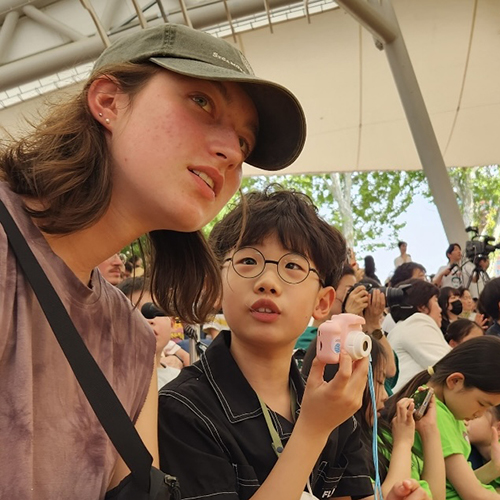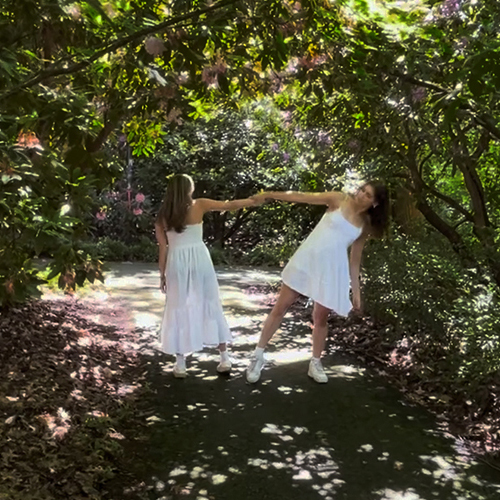For soldiers leaving the military, pursuing an art degree might not be the obvious next step. But it was the right choice for Mikhail Roque, an honors student in the UW School of Art + Art History + Design, and David Bonicillo, who earned a BFA in 3D4M (three-dimensional forum) in 2013. The veterans recently spoke with Perspectives editor Nancy Joseph about their military service, their art, and the relationship between the two.
Perspectives: Which came first, your interest in the military or your interest in art?
Mik Roque: Art has always been in me. My earliest memory is actually drawing with blue and yellow chalk all over newly painted white walls. I remember hearing my mom scream and my grandmother in the background laughing because she’s the one who bought me the chalk. It was like a beast out of its cage the moment I got that chalk.
David Bonicillo: I dabbled in art a little bit as a kid, but I was more about sports and being physically active. I always wanted to play football, but my mom thought I was going to get hurt, so…no football.

Perspectives: She was worried about football, so you went into the military instead?
DB: (Laughs) Yeah, it was pretty shocking for my family. I was 16 when I started thinking about it. It was 2003 and the war was starting to kick up. I went to the Army recruiting station with a few jobs in mind that I thought could really work for me afterwards, like being a mechanic. But then the recruiter showed me a video of guys going through ranger training and said, “You can do that.” I thought, “Yeah, I can do that.” So I joined the infantry. I was stationed at Fort Hood and then deployed to Camp Taji in Iraq. I spent a total of three years in the Army, a third of it abroad.
MR: I joined the military so that I could study art. After high school, I’d been accepted to some art academies but I didn’t have the money, so I decided to check out the Navy and Air Force. The Navy office was closest, so I went in there first and took a standardized test for recruits. I scored pretty high, and after that the recruiter’s jaws just locked onto me. I was in the Navy for four years, including two nine-month deployments to the Middle East, doing data analysis and statistics for aircraft avionics and armaments.
Perspectives: During those four years, did you ever waver from your plan to pursue an art degree?
MR: When I was in the Navy, I was pretty good at what I was doing. I was Sailor of the Year for my ship, and my family was pressuring me, saying that I should just stay in the military or become a lawyer since I’m good at that stuff. But I knew I wanted to do art. The outside pressure to do something other than art resulted in a lot of drinking. One day I got so frustrated that I hit an inanimate object so hard I broke my drawing hand. For a month I couldn’t draw. That’s when I realized I couldn’t function without creating. I told my parents, “This isn’t just a hobby. This is my identity.”
Perspectives: David, you didn’t arrive at the UW with that same passion for art. What led you to major in 3D4M?

DB: It was [3D4M professor, now emeritus] Akio Takamori. I took a ceramics course with him and liked it a whole lot, so I kept going with it. He really did a lot for me. He taught me to go with my instinct and pushed me to dig deeper and touch on things that you don’t really want to explore.
Perspectives: Like what?
DB: My senior year, for the BFA show in 3D4M, I made figurines of friends who had passed away. I made, like, eight figurines, thinking about the posture of these guys, how they carried themselves. The figurines don’t have faces, but friends would be able to recognize each of the guys from the posture. I never got to say goodbye to these guys.
Perspectives: It must have been emotional to work on those.
DB: I couldn’t spend too much time on them because it was hurting me. There’s only so deep you can dig before you get consumed by it. There were days when I was really depressed from reflecting on so much stuff. It took a lot out of me.
[My professor] ...pushed me to dig deeper and touch on things that you don’t really want to explore.
Perspectives: Where are the pieces now?
DB: At my house. I can’t see myself ever selling them because of what they mean to me. If anyone wanted them, they’d all have to go together. You can’t separate pieces like that. Art is more personal than profitable for me anyway.
Perspectives: How about you, Mik? How would you describe your work?

MR: I’m a very big advocate of equality—race, gender, age—so most of my work right now is a commentary on what popular media deems to be beautiful or successful. Also, being in the military, I had friends who committed suicide and friends in the Marine Corps who passed away, so the idea that life is short resonates with me. You’ve got to celebrate your own identity and live life the way you think you need to live it, as long as you’re not hurting anyone. So that’s what my work is about.
Perspectives: Any advice for other veterans interested in pursuing an art degree?
DB: They should know that the professors are going to push them and expect them to dig deep. If they’re not ready to push themselves and explore, then there’s really no point in going into it.
MR: I’d tell them not to be afraid to try. Even if they plan to major in something else, they should do what David did and just try an art class, be open to actually creating art and having a professor challenge you to think about it deeply. You never know—it might change your life.
More Stories

Finding Family in Korea Through Language & Plants
Through her love of languages and plants — and some serendipity — UW junior Katie Ruesink connected with a Korean family while studying in Seoul.

Dancing Across Campus
For the dance course "Activating Space," students danced in public spaces across the University of Washington's Seattle campus this spring.

Read or Listen to Faculty Favorites
Looking for book or podcast recommendations? We asked faculty who've been featured in Perspectives newsletter during the past academic year to suggest a personal favorite.